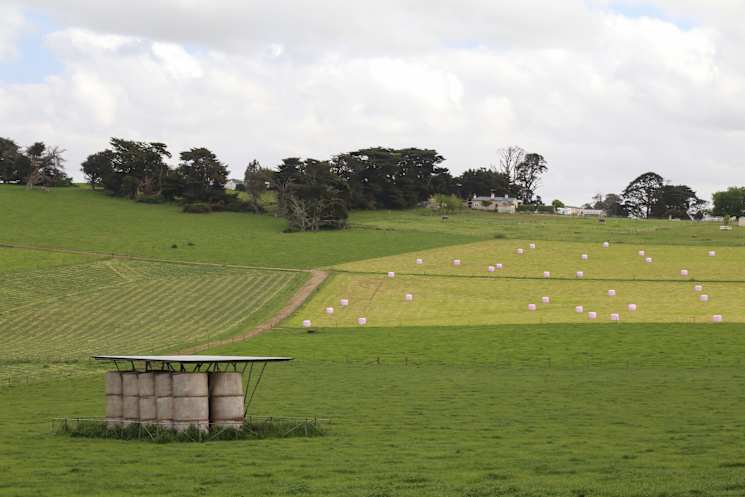
The Gippsland Soil School is a new, region-wide farmer education initiative designed to help farmers better manage their soil.
Co-led by Gippsland Agricultural Group (GAgG) and the East Gippsland Catchment Management Authority, the school is designed to break down the silos between different soil management approaches – drawing on the best of conventional, regenerative, precision, and biological soil management systems to equip farmer to manage soil better in their unique farming and soil systems
The program integrates knowledge across soil chemistry, biology, and physical structure – along with a little bit of human psychology – to help farmers make better decisions. By increasing confidence and capability, participants will learn how to spend their annual amendment and fertiliser budgets more wisely, unlocking stronger plant growth and better returns.
Soil is the most expensive input on most farms – and often the least understood. The soil school provides a space where farmers can explore, learn, and apply integrated approaches to improve soil health and performance across diverse landscapes and enterprises.
The Gippsland Soil School is delivered in eight modules across four 2-day training blocks over 12 months. The program includes practical, paddock-based learning, interactive workshops, and expert guest speakers. Each module builds on the last, taking farmers from foundational knowledge to advanced decision-making frameworks.
To register your interest in the Gippsland Soil School visit https://bit.ly/441VJlH
Topics include:
1. Soils 101 – geology, soil types, maps and classification
Understand where your soil comes from, how it's formed, and how its type affects water infiltration, drainage, and storage. This module sets the stage for all soil decisions by linking geology and regional classification with soil capacity.
Soil texture and particle sizes (sand, silt, clay)
Soil structure, aggregation, and porosity
Water infiltration, retention, and drainage
Compaction and how it affects root growth and biology
2. Soils 101 – physics and chemistry foundations
Explore the essential physical and chemical properties that influence soil performance and plant health. Learn how nutrient dynamics and soil structure interact and why they matter for productivity.
Cation exchange capacity (CEC) and soil pH
Major and trace nutrients (N, P, K, S, Ca, Mg)
Nutrient availability, lock-up, and soil buffering
How chemistry impacts plant uptake and overall soil function
3. Soil Biology 101 – soil life and nutrient cycling
Meet the living organisms that drive fertility. Discover the soil food web, how organic matter feeds biology, and how biological activity builds soil structure and resilience.
Bacteria, fungi, nematodes, protozoa and their roles
Nutrient cycling and the soil food web
Role of organic matter in feeding microbes
How biology supports structure, plant health, and soil repair
4. Soil and plant tissue test interpretation
Learn to decode your test results. This session builds confidence in interpreting both soil and tissue tests, enabling better decisions around nutrients and soil inputs.
Key indicators to watch for in tests
Understanding ratios, levels, and deficiencies
Matching test results with paddock observations
Making cost-effective input decisions
5. Inputs – granular, foliar, compost, manures and bio-fertilisers
Compare different input types and explore how timing, method, and biological support affect outcomes.
Overview of input categories and functions
When and how to apply for maximum benefit
Compatibility with soil types and biology
Building a system around the right inputs
6. Livestock, grazing, plant diversity and bio-fertilisers
Explore how grazing animals and diverse plants contribute to soil health. Understand the synergy between biology, pasture management, and biofertilisers.
Benefits of plant diversity on soil function
Managed grazing and animal impact strategies
Role of livestock in nutrient cycling
Integrating biofertilisers into the system
7. Soil carbon – science vs hype, fact and fiction
Cut through the buzz around soil carbon. Understand the real science, what's achievable on-farm, and how carbon connects to markets and productivity.
What builds soil carbon – and what doesn't
Soil types and carbon storage potential
Co-benefits: water retention, structure, biology
Carbon markets and emerging policy trends
8. Measuring what matters – linking soil health with financials and wellbeing
Move beyond yield as the only metric. Learn how to track the real value of soil health improvements—economically, personally, and ecologically.
Indicators of soil health and how to measure them
Linking soil gains to farm profitability
Mental load, satisfaction, and wellbeing outcomes
Building a system that sustains people and land





